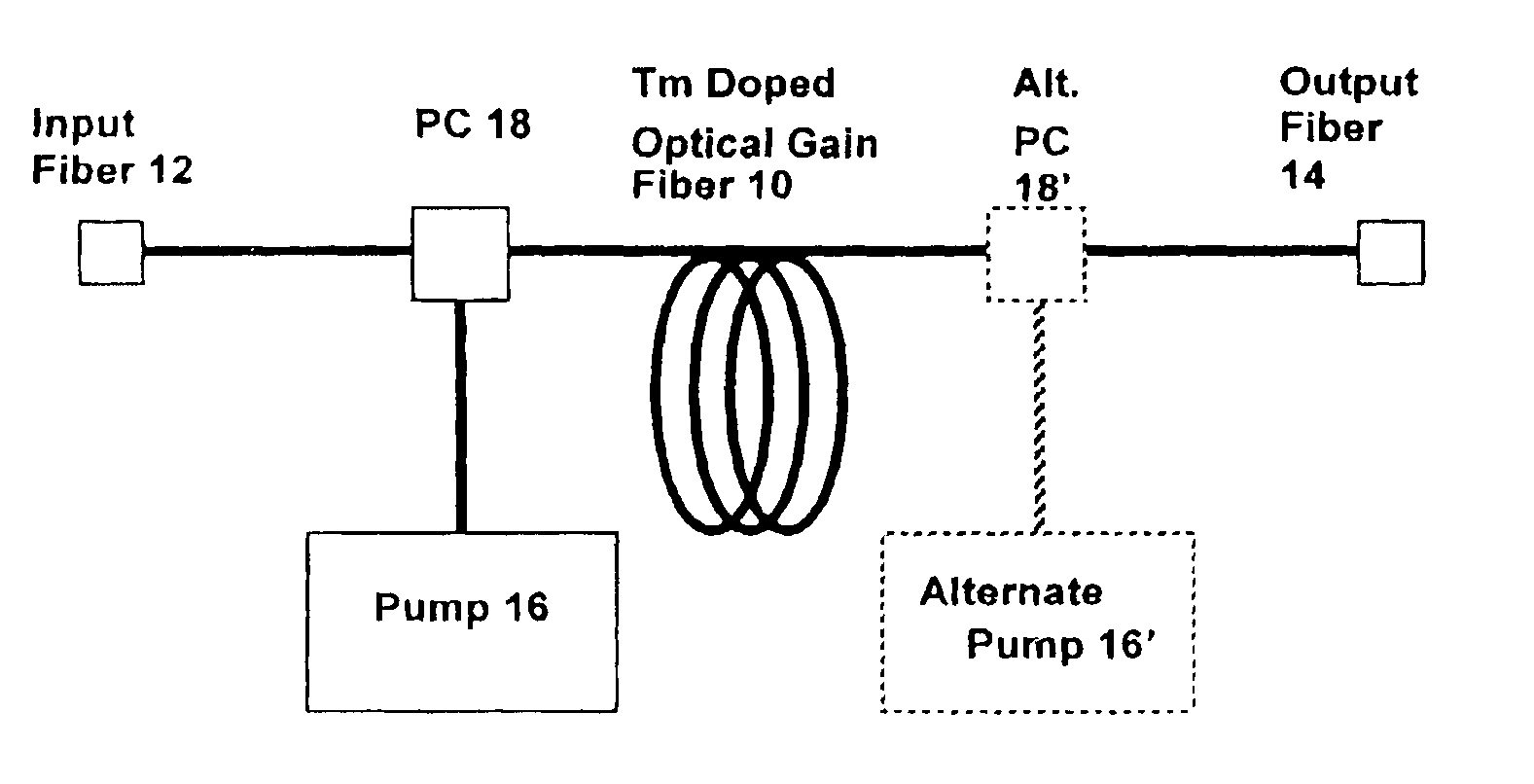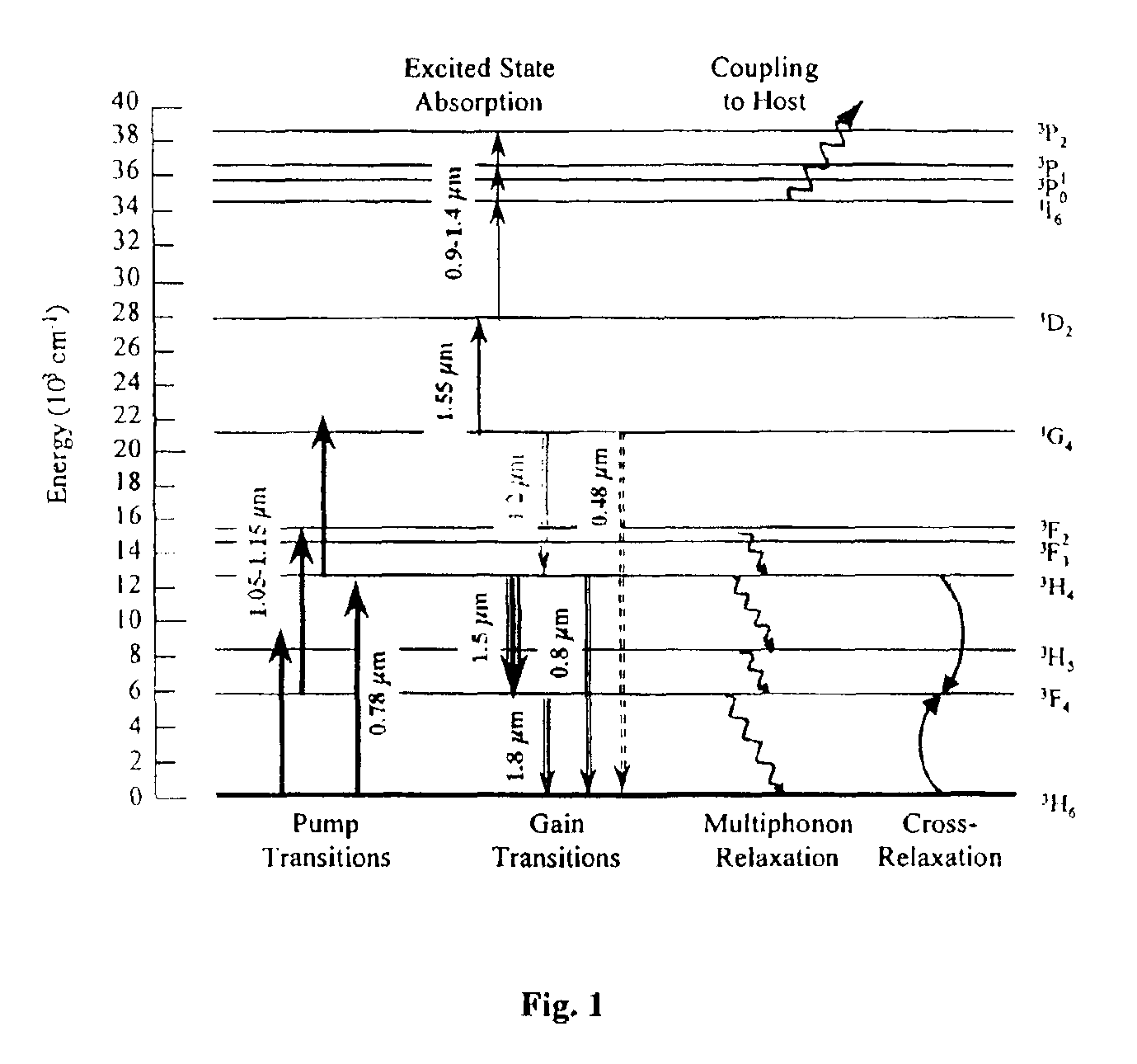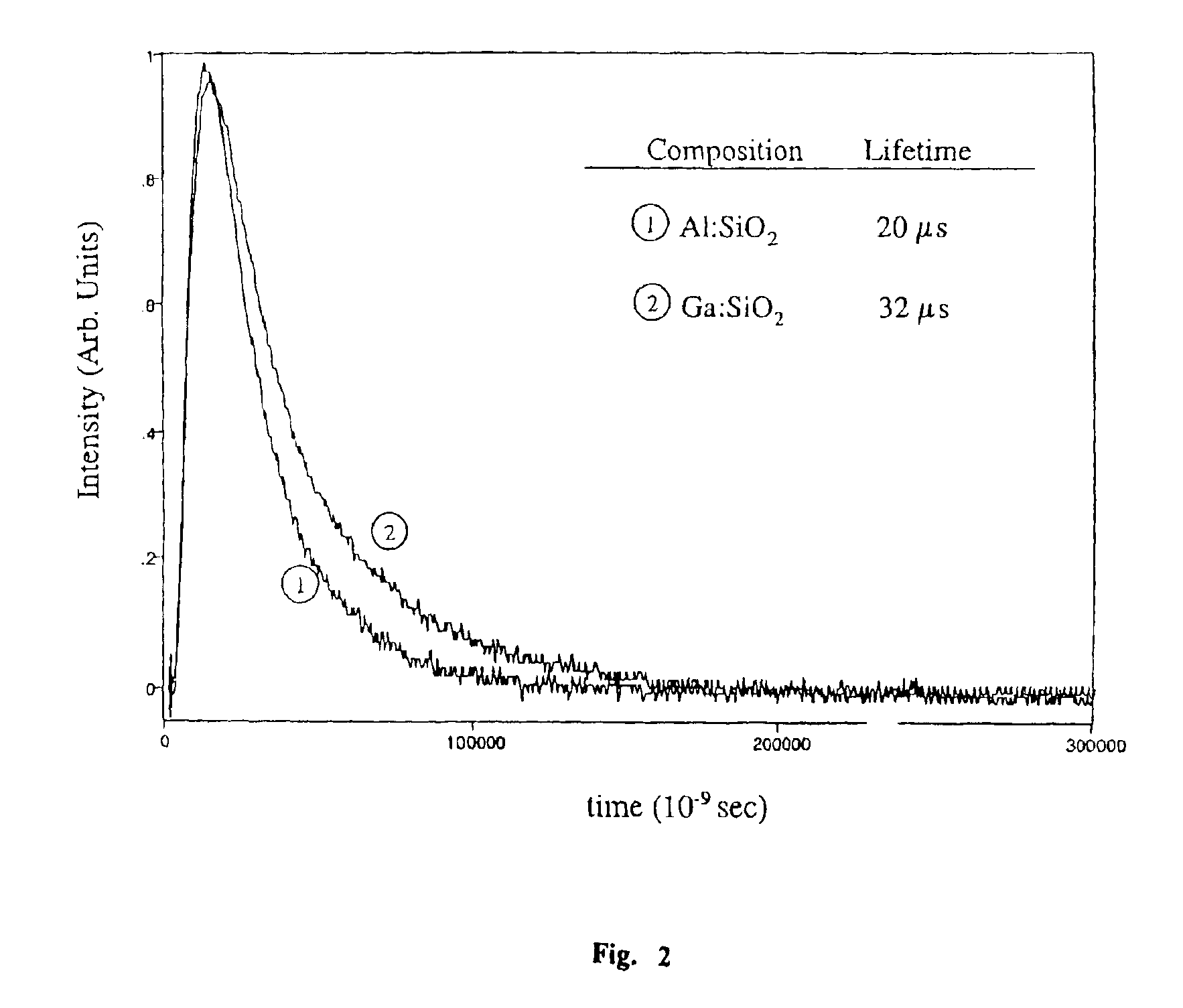Amplification device utilizing thulium doped modified silicate optical fiber
a technology of optical fiber and modified silicate, which is applied in the direction of optical elements, instruments, active medium materials, etc., can solve the problems of reducing the population available to provide gain on the transition of interest, unable to demonstrate practical amplifiers for wavelengths, and fully half of the low-loss window bandwidth is unused, so as to achieve a substantially increased data transmission rate, shorten wavelength, and extend the band of wavelengths
- Summary
- Abstract
- Description
- Claims
- Application Information
AI Technical Summary
Benefits of technology
Problems solved by technology
Method used
Image
Examples
example 1
[0042]A gallium doped silica preform doped with thulium was fabricated using MCVD. An all vapor process was used where gallium chloride and rare-earth chelate were transported to the MCVD reaction zone via a heated injection assembly. The MCVD / chelate injection tube assembly used is similar to that outlined in the article by Tumminelli, R. P. et al., “Fabrication of high concentration rare-earth doped optical fibers using chelates”, J. Lightwave Tech., vol 8, no. 11, 1990, p. 1680.
[0043]The following flow conditions were used: SiCl4: (bubbler T=25° C.) 20 sccm (standard cubic centimeter per minute); GaCl3 (bubbler T=180° C.) 200 sccm; Tm(TMHD)3 (bubbler T=170° C.) 30 sccm; O2: 800 sccm; and He: 800 sccm.
[0044]Five grams of GaCl3 was loaded into a quartz bubbler and heated to 180° C. About 10 g of Tm chelate was dispersed in SiO2 sand, loaded into a quartz bubbler, and heated to 170° C. These were connected to the heated injection tube assembly. A 16 mm×20 mm substrate tube was used ...
example 2
[0077]As described above, the ever-expanding demand for bandwidth in wavelength division multiplexing systems over the past few years has led to the extensive development of optical fiber amplifiers in the C-band (1530-1565 nm) and L-band (1570-1610 nm) based on erbium-doped silicate glasses. However, these two bands account for <25% of the usable low-loss fiber telecommunications window (approximately 1400-1700 nm). Thus, development of a practical amplifier within this window is of substantial interest, particularly in the so-called S-band, ˜1450-1520 nm.
[0078]The thulium 3H4→3F4 transition can provide amplification in the S-band wavelength range was first demonstrated by Komuka, et al. using a fluorozirconate host. See, T. Komuka et al., “1.47 μm band Tm3+ doped fluoride fibre amplifier using a 1.064 μm upconversion pumping scheme”, Electron Lett. 29, 10-112 (1993). Despite considerable subsequent development, application of Tm:ZBLAN amplifiers is limited by difficulties with fab...
PUM
| Property | Measurement | Unit |
|---|---|---|
| Percent by mass | aaaaa | aaaaa |
| Length | aaaaa | aaaaa |
| Substance count | aaaaa | aaaaa |
Abstract
Description
Claims
Application Information
 Login to View More
Login to View More - R&D
- Intellectual Property
- Life Sciences
- Materials
- Tech Scout
- Unparalleled Data Quality
- Higher Quality Content
- 60% Fewer Hallucinations
Browse by: Latest US Patents, China's latest patents, Technical Efficacy Thesaurus, Application Domain, Technology Topic, Popular Technical Reports.
© 2025 PatSnap. All rights reserved.Legal|Privacy policy|Modern Slavery Act Transparency Statement|Sitemap|About US| Contact US: help@patsnap.com



